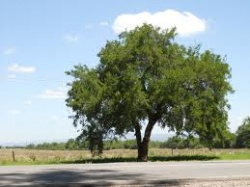Tala tree
Tala tree
多羅樹 (Skt; Jpn tara-ju )
Now known as palmyra palm. A tree whose leaves were used as a writing surface in ancient India and surrounding regions. Buddhist scriptures were recorded on these leaves. The tala tree belongs to the palm family and reaches more than twenty meters in height. Its fan-shaped leaves are tough and nearly two meters in length.
They were dried and cut into rectangles of the same size, about six centimeters wide and thirty to sixty centimeters long.
Text was inscribed on both sides with a bamboo or iron stylus.
The leaves were pierced at the end with holes, bound with string, and secured between two wooden covers.
Tala leaves were used to record and preserve Buddhist scriptures in countries where the trees were prevalent, such as India, Myanmar, and Sri Lanka.
Recently discovered Buddhist texts that were preserved and transmitted in this form are referred to as "palm-leaf scriptures."
Sutras and other Buddhist scriptures often mention the tala tree as a measure of height, with phrases like "as high as eight tala trees," etc.
